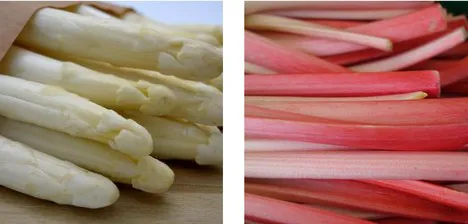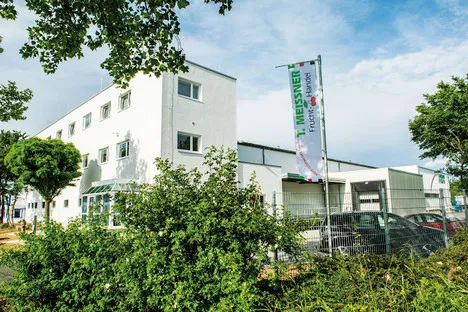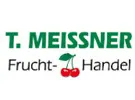The arrival of the first signs of spring, such as asparagus, hothouse rhubarb and wild garlic, marks the start of the spring campaign. Despite increased energy costs and continuing uncertainty, North Hessian fresh produce wholesaler Tom Meissner is confident about the upcoming season. "The price structures in the past two weeks were absolute madness, especially for imports from the Mediterranean region. Accordingly, there was a lot of need for talk and explanation among our customers, which was very intensive for us wholesalers. Currently, the whole thing seems to be recovering and more volume is hitting the market again."
Greenhouse rhubarb: German product in high demand
The first Dutch greenhouse rhubarb is currently meeting low demand. "The first arrivals were traded at particularly high prices, but the price situation has since calmed down a bit. As soon as the first batches from the southern Hessian supplier Böttcher Gartenbau hit the market, we will immediately change over, exclusively trading regional goods then. The bakeries and confectioners in particular attach great importance to the regional origin of the rhubarb. We don't have any concrete information at the moment, but we expect the first arrivals by early-mid March," says Meissner, who will switch to Palatinate open ground produce at the end of the rhubarb season at the beginning of April.

Asparagus: Good domestic campaign expected
Meanwhile, the Kassel-based fruit wholesaler is already seeing the first greenhouse asparagus, also from the Netherlands. "However, these are very limited volumes; just a few boxes per week. Due to the early Easter -at the start of April- , the Dutch early asparagus segment will be quite interesting this year. As of today, early growers in the Palatinate will start harvesting their asparagus in mid/late March. However, a cold spell is forecast for large parts of Germany starting next week, which is why the start of the season may be delayed another one or two weeks," says Meissner, who continues to offer asparagus from Peru, in addition to Dutch asparagus.
The region of northern Hesse is largely dependent on neighboring southern Hesse for the procurement of regional produce. Meissner: "In recent years, there has been a slight reduction in space, due to increased operating costs coupled with oversupply. Especially during the peak season, there were a few weeks in a row when there was simply too much produce brought to market, which ultimately destroyed the entire season." In general, green asparagus is growing strongly, while demand for white asparagus is rather stagnant. This trend can be observed in all segments, whether food retail, direct marketing or gastronomy, he said. "The purchasing power is already there, it's just that people are buying differently. In this respect, I expect a stronger asparagus season compared to previous years."

Wild garlic: 2022 was extremely strong sales year
The first free-range wild garlic from the Palatinate completes the spring lineup. "We now start immediately with German produce for the second year in a row, whereas before we always relied on imports. Merchandise is only available in very limited quantities, which means that sales are seeing high prices, but that will soon change," said Meissner, who offered German wild garlic in 2022 until mid-May. "2022 was an extremely strong wild garlic year with good volumes from several regions in Germany. The appreciation toward wild garlic is very high, especially in owner-operated retail markets, which is of course related to the fact that wild garlic is one of a few seasonal items these days."
Images: T. Meissner Frucht-Handels-Gesellschaft mbH
For more information:
Tom Meissner
T. Meissner Frucht-Handels-Gesellschaft mbH
Falderbaumstraße 5
34123 Kassel
Tel.: +49 (0561) 78 176-0
Fax: +49 (0561) 78 176-30
[email protected]
www.meissner-fruchthandel.de










